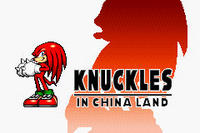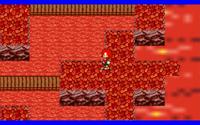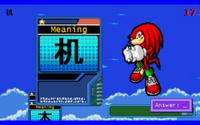[Game] Knuckles in China Land

Summary
Name: Knuckles in China Land
Abbr: KiCL
Author: André Dirk
Homepage: http://www.kicl.info/
Forum: YES
Platforms: Windows
Status: FREEWARE
Summary (from site):
Knuckles in China Land is a Learn Japanese Game combined with a console-style RPG (Role-Playing Game). It is designed to make certain aspects of Japanese, German, and Indonesian language-learning a bit more enjoyable.
Advantages:
- Multiple languages
- Lengthy storyline
- Extensible vocabulary
- Free
Disadvantages:
- Windows only
- No sound
Review
Story:
You find yourself in China Land and have to learn the language of dreams (whichever language you chose at the beginning) in order to return. It's more complicated than that, but I don't want to reveal any surprises. There is a LOT to this storyline.
Graphics:
What can I say? It's a fan-game; a tile-based RPG with the graphics based on SEGA characters (the artists can be found in the credits section of the help file). Unfortunately, full-screen only.
Sound:
None. Alas.
Gameplay:
Standard RPG fare. You have a main goal, and current sub-goals (find an item, find your way through the maze, etc). There's no overworld to make things easier, so you may get lost at some point. You also don't level-up from battles, so the role-playing element is a bit limited. A great feature of this game is the vocabulary list builder. Don't like the built-in list? Make your own. Studying from a particular Japanese book and want a list to accompany it? Make your own (I did). Want to learn a different language? Make your own list. The storyline remains the same (and is itself not yet expandable), but you can add just about any kind of list you want to play against.
Battle:
Flash-card based. See the card, type the answer (or one of the answers). Flash cards can be text or graphical. New cards are introduced at a fairly rapid pace (perhaps too rapid, and no apparent means to slow it down). A bit repetitive after a while, but the storyline may keep you playing after the battle-boredom sets in.
Conclusion:
A decent game, and you can't beat the price (free). It has a way to go before it earns a regular place in my toychest, but fortunately the author is making frequent updates. Suggestions posted to the forum are implemented regularly. Definitely worth checking out.
Screenshots









